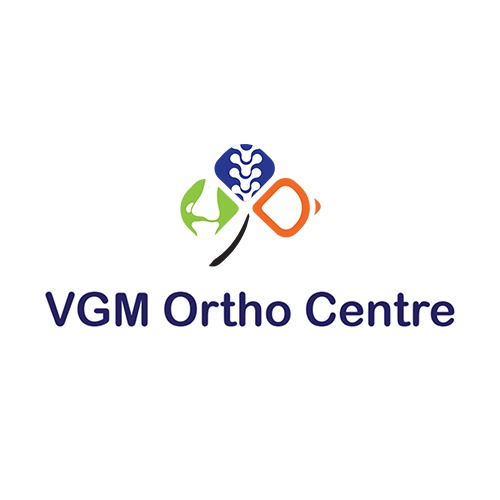

This is the final end stage surgery for hip arthritis when all conservative treatment measures have failed. TOTAL HIP REPLACEMENT is a surgical procedure where the worn out surfaces of the hip joints are cut using appropriate jigs and metallic durable implants are either directly implanted on the bone or fixed to the bone surfaces using a substance called bone cement. Intervening these two metals is an intervening polyethylene/ceramic insert. The stability, range of movement and alignment of the joint are checked and ensured throughout the procedure.. .
Arthritis is the end stage disease of all hip disorders where the joint surface (cartilage) wears out. The joint surfaces are covered by a smooth layer called cartilage that allows pain free movement in the joint. Arthritis is usually of multifactorial etiology. When the articular cartilage wears out, the bone ends rub on one another and cause pain. Some causes include:
Childhood disorders During childhood the hip is prone to get affected by a range of hip disorders called “The Paediatric hip disorders” which can lead to irreversible damage to the joint directly or indirectly by affecting the blood supply of the hip joint leading to hip joint damage/deformation, reduced growth of the limb and deformities. These conditions include Perthes disease, septic arthritis, tuberculosis hip, slipped upper femoral epiphysis, synovitis hip, traumatic injury etc.. Growth abnormalities of the hip (such as a shallow socket) may lead to premature arthritis
Adults Trauma (fracture), idiopathic avascular necrosis (reduced blood supply), Increased stress, obesity, infection, old age, rheumatoid arthritis etc..
The true physiological age of the patient is not of true relevance. Other factors like life expectancy, activity levels, mobility levels, cardiac/physician assessment should be considered.
Most patients can walk within 24 hours after surgery. However pain tolerance, general condition, co-morbid diseases, muscle strength, degree of deformity corrected, bone strength are factors to consider. Hence some patients may walk in 48-72 hours.
Patients usually climb two to five steps before discharge. This ensures that they can achieve independence when they return home and need not depend on family members for support.
Patients usually stay for around five days after surgery (range of 3 to 7 days). The purpose of post-operative hospital stay is wound dressing, antibiotics, pain killers and other medications, exercises under physiotherapist guidance, training to achieve independence after surgery.
There is no need for a walker usually. However a walker is advised as a temporary support for 3-4 days for pain relief and to encourage walking.
The sutures usually come off by 12-14 days after surgery. Usually two dressings are done during hospital stay. After discharge one further dressing maybe needed before suture removal. All dates can be comfortably made up by prior appointments.
There are many reasons for limping after surgery, the most common being not doing adequate exercises to restore mobility and not improving muscle strength. Other occasional causes include infection, implant loosening etc..
The role of a physiotherapist is to encourage mobility, aid and assist in achieving movements of the knee, improving muscle strength and achieving independence after surgery.
Invariably all individuals after 40 years of age have one disease atleast like diabetes, hypertension. Heart disease, asthma, thyroid, eosinophilia, allergy etc.. The mere presence of such diseases is definitely not a contraindication. However, since this is an elective surgery, it is better to control these co-morbid illnesses and then perform the surgery.